Chmod Command In Linux
Chmod command in Linux with examples Last Updated:.

Chmod command in linux. Use the chown and chmod commands to secure file access on your system. $ chmod o+x app.sh Change File Mode For All. Linux Operating System- sudo, su and chmod commands.
Vijay Bhaskar 10/10/12 1 Comments Chmod (change mode) is one of the most frequently used commands in unix or linux operating system. Before explaining the syntax of the chmod command, you need to look at the cryptic way Linux reports file permissions. The chmod system call cannot change their permissions.
It’s a same as using your mouse to right-click a file or folder and selecting the permission tabs and. We run the chmod command command to change file access permissions such as read, write, and access. 15-05-19 In Unix-like operating systems, the chmod command is used to change the access mode of a file.
The chmod system call cannot change their permissions. In general, chmod commands take the form:. $ chmod g+x app.sh Change File Mode For Other.
Chmod is a Linux command that will let you "set permissions" (aka, assign who can read/write/execute) on a file. In this article, you will learn how to change permissions of any file or directory with chmod command. The chmod command stands for change mode… and it’s used to limit access to resources….
But in Linux, ownership is a massive part of file security, with file permissions providing the remainder of it. You can read chmod u+r as "user plus read," as it gives the user read permission. How does chmod work?.
By issuing these commands, you can change groups of files and directories in Linux. To change permission using the Linux chmod command we have to follow some syntax and rules. Chmod A quick guide to the `chmod` command, used to change the file mode.
To know about the access permissions of a file or directory, use the ls -l command as shown below:. Chmod a=r foldername to give only read permission for everyone. Following is a sample of ls -l command output.
To recursively operate on all files and directories under a given directory, use the chmod command with the -R, (--recursive) option. Setuid Setgid Sticky Bit. This tutorial explains chmod command symbolic notation (r, w, x, a) and octal notation (0, 1, 2, 4) in detail with chmod command arguments and options.
$ chmod OPTIONS MODE filename Only the root user or a regular user with sudo privileges can change file or directory permissions. These permissions are given to file/folder to provide a secure environment to the OS, efficient management of a file and high-level access to the users accessing the files/ folders. How to Use the chmod Command on Linux chmod Modifies File Permissions.
The chmod command in Linux is used to change file and directory permissions using either text (symbolic) or numeric (octal) notation. In Linux, you will often need to make use of the chmod command. The chmod command lets you change the permissions for a Linux file.
Chown user file or chown user:group file. With the concepts mentioned in this article, you are equipped with sufficient knowledge to handle permissions in Linux-based distros. However, for each symbolic link listed on the command line, chmod changes the permissions of the pointed-to file.
OR use the symbolic CHMOD Command:. It also allows to change the file permission recursively to configure multiple files and sub-directories using a single command. In some cases we can see the +x without a definition.
$ chmod u+x samplescript.sh Allow everyone to read, write, and execute the file and turn on the set group-ID. Representations used for File permission. The chmod command stands for “change mode”, and allows changing permissions of files and folders, also known as “modes” in UNIX.
To use chmod, you need to know about access modes.Each file on a Linux system has nine access modes (or settings) that determine exactly who can. Chmod options permissions file name If no options are specified, chmod modifies the permissions of the file specified by file name to the permissions specified by permissions. The Linux command chmod allows you to control exactly who is able to read, edit, or run your files.
Use the octal CHMOD Command:. We use the chmod command to do this, and eventually to chmod has become an almost acceptable English verb, meaning the changing of the access mode of a file. Chmod -R 640 folder_name.
It’s usually used when installing and configuring various services and features in a Linux system. It takes the following syntax:. Chmod -R a+rwx,u-x,g-wx,o-rwx folder_name.
Linux divides the file permissions into read, write and execute denoted by r,w, and x;. Possession is Nine-Tenths of the Law. A plus (+) symbol adds a permission, and a minus (-) symbol removes a permission.
Chmod stands for change mode, which changes the file or directory mode bits. $ chmod a+r sample.txt Make a file readable and writable by the group and others. Or so they say.
The command chmod changes the file mode bits of each given file according to mode, which can be either a symbolic representation of changes to make, or an octal number representing the bit pattern for the new mode bits. Linux chmod command is used to change access permissions of files and directories. After that, you will be able to run it without using the sh or bash commands.
Chmod command in Linux What is chmod?. The chown command stands for “change owner”, and allows changing the owner of a given file or folder, which can. The Linux command to change permissions on a file or directory is chmod, which we like to read as change file mode.
The chmod command modifies the permission mode of objects in the system. There are three basic modes to files and directories:. Chmod Permissions for chmod 640.
Actually, chmod Command in Linux plays a greater role to keep all the files and directories of the system safe and secure so that no unauthorized person. The name is an abbreviation of change mode. What does chmod do in Linux?.
This page explains how to use chmod and chown command on Linux or Unix-like systems. You can use chmod in the command line to change file or directory permissions on unix or unix-like systems such as linux or BSD. Chmod is a great Linux command for manipulating file and directory permissions.
This video explains chmod and chown commands. Recursive Preserve-Root Reference File. By using this command, we can set the read, write, and execute permissions for all three of the permission groups (Owner, Group and Other) in Linux.
In Unix and Unix-like operating systems, chmod is the command and system call which is used to change the access permissions of file system objects (files and directories). Chmod stands for “Change Mode” and is used to modify the permissions of files and directories in a Linux based system. On a particular directory if you have multiple sub-directories and files, the following command will assign execute permission only to all the sub-directories in the current directory (not the files in the current directory).
The chmod command allows you to change the permissions on a file using either a symbolic or numeric mode or a reference file. Chmod -R MODE DIRECTORY. Chmod Command in Linux Linux File Permission Introduction to Linux File Permission.
This is not a problem since the permissions of symbolic links are never used. Go into a folder, and run the ls -al command. Every file in the Linux / macOS Operating Systems (and UNIX systems in general) has 3 permissions:.
Linux File Permission :. We can enable the execution right of the all users in a file with o like below. Read, write, and execute.
Creating a Bash File. You can change file permissions in this format:. Below is a list of numerical permissions that can be set for the user, group, and everyone else on the.
The first 7 sets the permissions for the user, the second 7 sets the permissions for the group, and. Chmod command means change mode. $ chmod =rwx,g+s samplescript.sh Print.
The general syntax to recursively change the file’s permissions is as follows:. How to use chmod?. H ow do I use chmod and chown command under Linux / Unix operating systems?.
Learn how chmod command is used to manage Linux permission levels (user, group and other) and types (read, write and execute) step by step with practical examples. We can use the -l (long format) option to have ls list the file permissions. Owner, group, and everyone.
Linux grants three different types of permissions — read, write, and execute — for three different scopes:. Chmod means ‘change mode’ and it changes file or directory mode bits (the way a file can be accessed). The permissions on a file can be changed by 'chmod' command which can be further divided into Absolute and Symbolic mode;.
We have already described the Linux file permissions. Chmod is an abbreviation for change mode;. The request is filtered by the umask.
How to Change Groups of Files and Directories in Linux. Others is special group which covers all users in a Linux system. Linux file permission is a very important aspects in terms of security issues for the system administrator of Linux Operating System.
To put it simply, use chmod command to change the file or directory permissions. The chmod command A normal consequence of applying strict file permissions, and sometimes a nuisance, is that access rights will need to be changed for all kinds of reasons. This section provide description about sudo command, su command and chmod command, with the help of these commands you can give/take permission of files(s)/directory(s).
In Linux, who can do what to a file or directory is controlled through sets of. Verbose Changes Silent Default. In this tutorial, I am going through the steps to create a bash script and to make the script executable using the chmod command.
The chmod command is used to define or change permissioins or modes on files and limit access to only those who are allowed access… It changes the mode of each FILE to MODE…. Chmod is a Linux command that will let you "set permissions" (aka, assign who can read/write/execute) on a file. Use the chown command to change file owner and group information.
Chmod command is used to change access permission of files and directories in Linux operating systems.chmod stands for change mode.Access permissions specify whether a user account or group can read, write, or execute a given file and directory. The chmod and chown commands are used to control access to files in UNIX and Linux systems. Even, it ignores the symbolic links come across recursive directory traversal.
We will explain the modes in more detail later in this article. More Information on. It can not change the permission of symbolic links.
$ chmod u+X *. The name is an abbreviation of change mode. Additionally, each of these modes can be applied to the user, the group, or others.
File/Directory permission is either Read or Write or executable for either user or group or others. On Linux and other Unix-like operating systems, there is a set of rules for each file which defines who can access that file, and how they can access it. Chmod never changes the permissions of symbolic links;.
This command will set the user and the group ownership to mary. Extra chmod command options. 3 chmod examples Syntax and Options Related Commands.
If you need to change a file permission, use the chmod command. The first step is to create a new text file with .sh extension using the following command. R &ndash Read (value is 4).
The command can accept one or more files and/or directories separated by space as arguments. The command is relatively simple to use and involves using. Chmod never changes the permissions of symbolic links;.
It stands for change mode. The chmod command is used to change the file or directory access permissions. Sudo chown 1001:1001 at.c.
The chmod command allows you to change the permissions of files using symbolic or numeric mode. Representations used for Ownerships. The 'chown' command can change the ownership of a file/directory.
In Linux/Unix like operating system, the chmod command is used to change the access mode of a file. $ chmod go+rw sample.txt Make a shell script executable by the user/owner. Linux chmod command is used to change the access permissions of files and directories.
It is one of the most used and important commands in the set of Linux security commands. This command is used for changing the mode of access. If you ever need to say it out loud, just pronounce it exactly as it looks:.
Viewing and Understanding File Permissions. It is also used to change special mode flags. U - User g - Group o - Others.
In this tutorial, you will learn how to use chmod recursively and change file permission on Linux. Chmod ugo+rwx foldername to give read, write, and execute to everyone. These rules are called file permissions or file modes.
Published Sep 23,. Chmod has two operating modes:. The chmod command in Linux/Unix is abbreviated as CH ange MOD e.
Chmod stands for change mode. Linux chmod command is one of the most commonly used commands especially by system administrators when assigning modifying file and folder permissions. Use the following commands:.
How to Use the chmod Command in Linux Command Syntax.
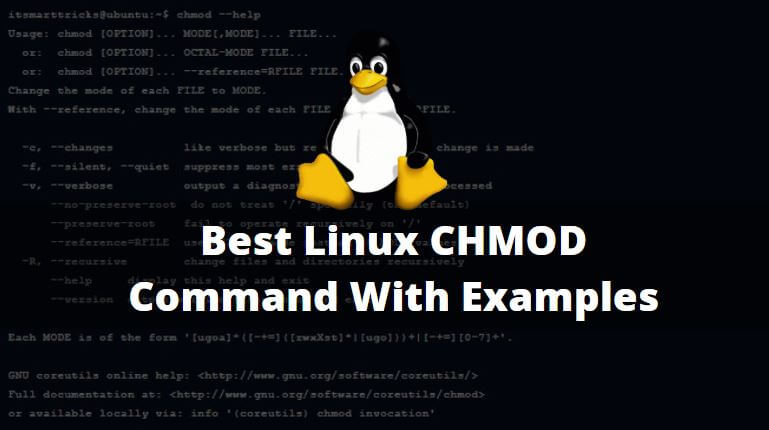
Best Linux Chmod Command With Examples It Smart Tricks

File Permissions How To Use Chmod Command Youtube

Chmod Wikipedia
Chmod Command In Linux のギャラリー

Chmod Command In Unix Learn Unix Online Fresh2refresh Com

Linux Chmod Command Dracula Servers Tutorials
Q Tbn 3aand9gcs Trmaopb41lzfo2wl Mi6olorurkywaddbudhnw Ne1mor3ct Usqp Cau

Chmod Chown Wsl Improvements Windows Command Line

How Does The Number 777 Come Out In Chmod 777 Under Linux Develop Paper

11 Popular Unix Linux Chmod Command Examples To Change File Permissions Cyberithub

Linux Commands 5 File Permission Chmod Youtube

Linux Chmod Command Javatpoint

Linux Chmod Command Javatpoint
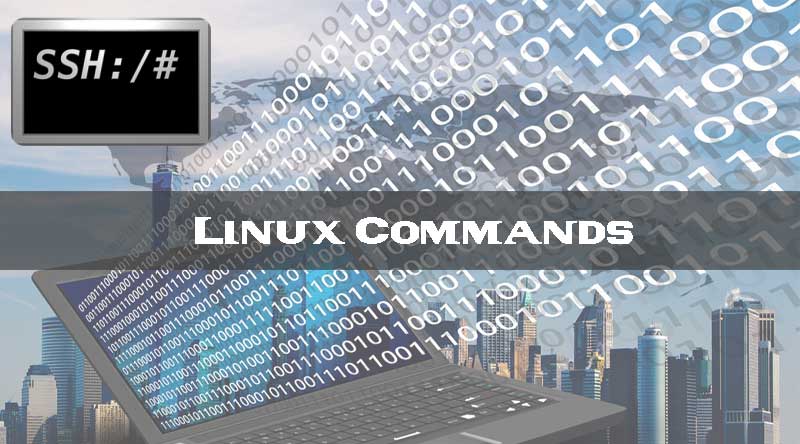
Linux And Unix Chmod Command Tutorial And Examples Xsofthost

Use Of Chmod Command In Linux Devopsdex
Q Tbn 3aand9gcq1nsq3kxri7ryrifobs2rfobawbv4hezfw9 Ldf4feblahyn09 Usqp Cau

Explained How To Use Chmod Command Complete Guide Youtube

Use Of Chmod Command In Linux Devopsdex

Linux Permissions Posix Chmod Chown Chgrp Youtube

Linux File Permissions Tutorial For Beginners

Linux Terminal File Permissions Chmod Chown And Chgrp Youtube

Chown And Chmod Command Usage In Linux System Develop Paper

Chmod Command In Linux File Permissions Linuxize

Linux Chmod Command Utility Software Computer File

The Chmod Command In Linux Programmer Sought

Restore Executable Permission To Chmod Command In Linux Ostechnix

The Basics Of The Chmod Command Pi My Life Up

How To Copy File Permissions And Ownership To Another File In Linux

Chmod Command

Chmod Command In Linux File Permissions Tecnstuff
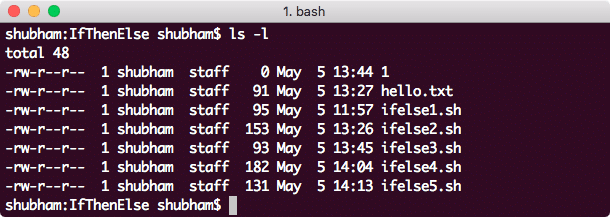
Linux Chmod Example Linux Hint
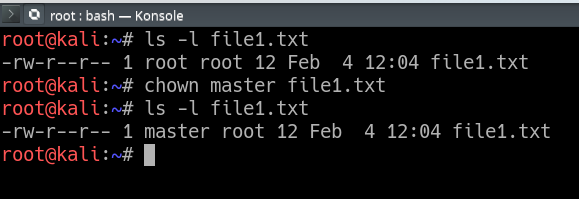
Chown Command In Linux With Examples Geeksforgeeks

Use Of Chmod Command In Linux Devopsdex
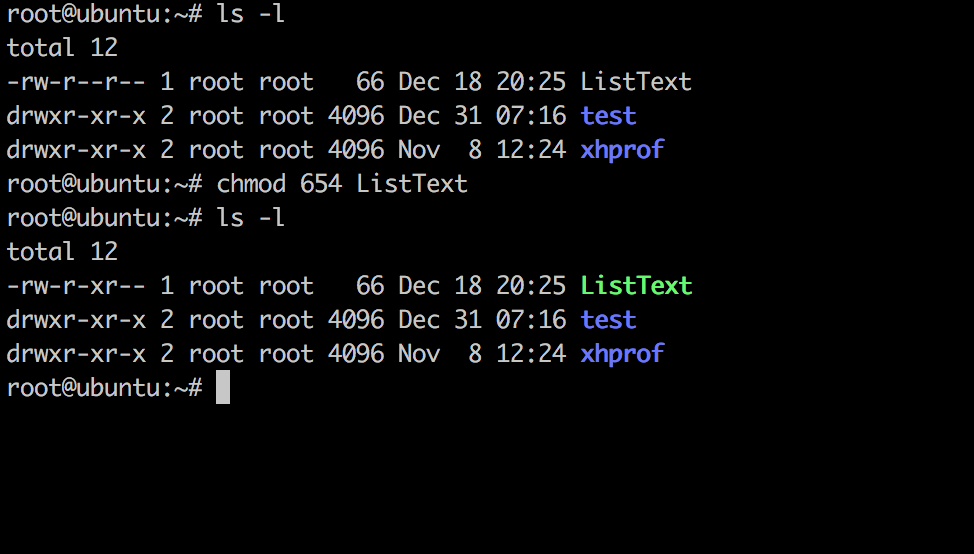
Linux Chmod Command Linuxfordevices

How To Use Chmod And Chown Command Nixcraft

How To Use Chmod Command In Linux Explained With Examples

8 Linux Chmod Command Examples To Understand It The Linux Juggernaut

Chmod 7777

Chmod 777 In Terminal The Command To Make All Changes Affect Every File And Folder Ask Ubuntu

How To Use Chmod Command In Linux Explained With Examples

Linux File Permission Javatpoint
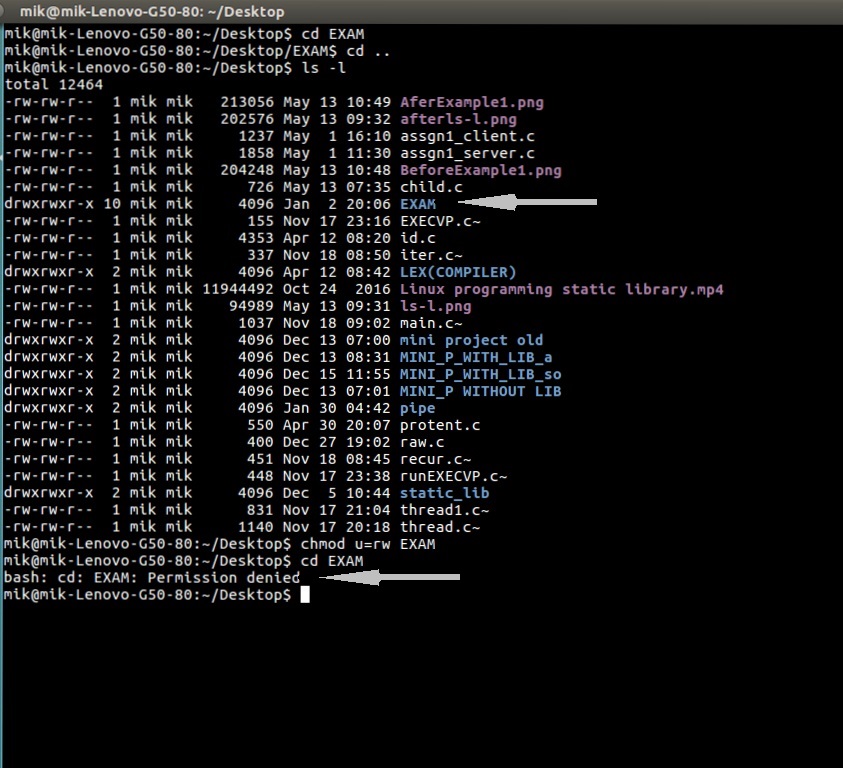
Chmod Command In Linux With Examples Geeksforgeeks

Linux Chmod Command Tutorial With Examples To Change Permission Of Files And Folders Poftut

Linux Commands Chmod

How To Run Sh File In Linux How To Use Linux

Chmod Recursive Change Permissions Recursively On Files Folders

How To Use The Chmod Terminal Command In Ubuntu Linux Operating Systems Wonderhowto
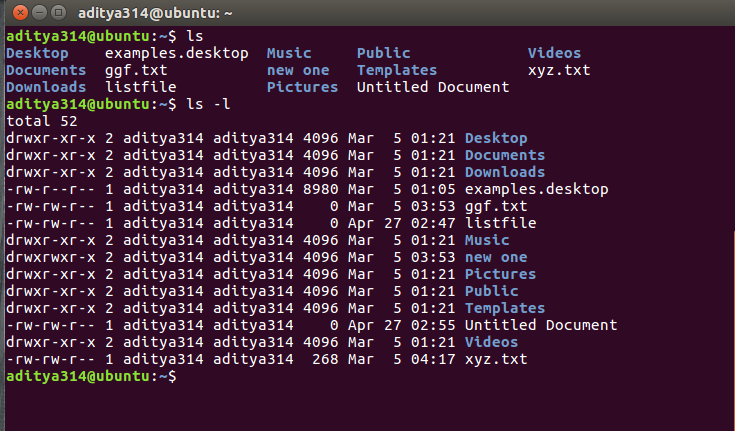
Permissions In Linux Geeksforgeeks

Linux Command Line Basics Part 4 I Have A Pc I Have A Pc

How To Use Chmod And Chown Command Nixcraft
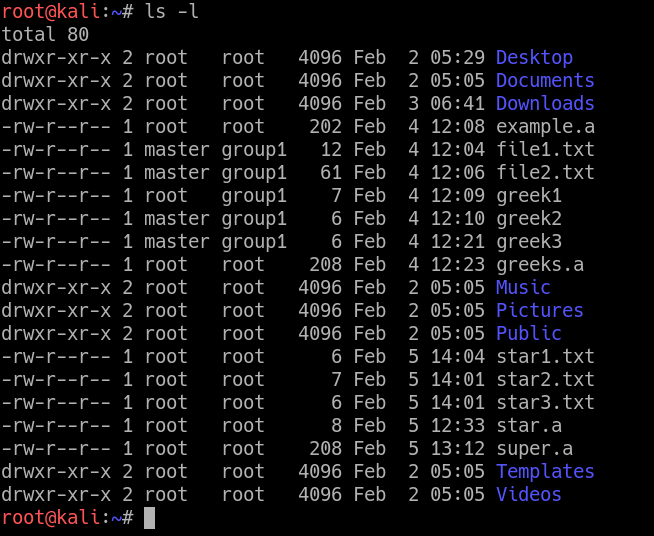
Chown Command In Linux With Examples Geeksforgeeks

Chmod Recursive Change Permissions Recursively On Files Folders

Use Of Chmod Command In Linux Devopsdex

Linux File Permissions Tutorial How To View And Change Permission

Chmod 777 755 655 644 And More Permissions Linux Files Tutorials

How To Use The Chmod Command 2 Minute Linux Tips Network World
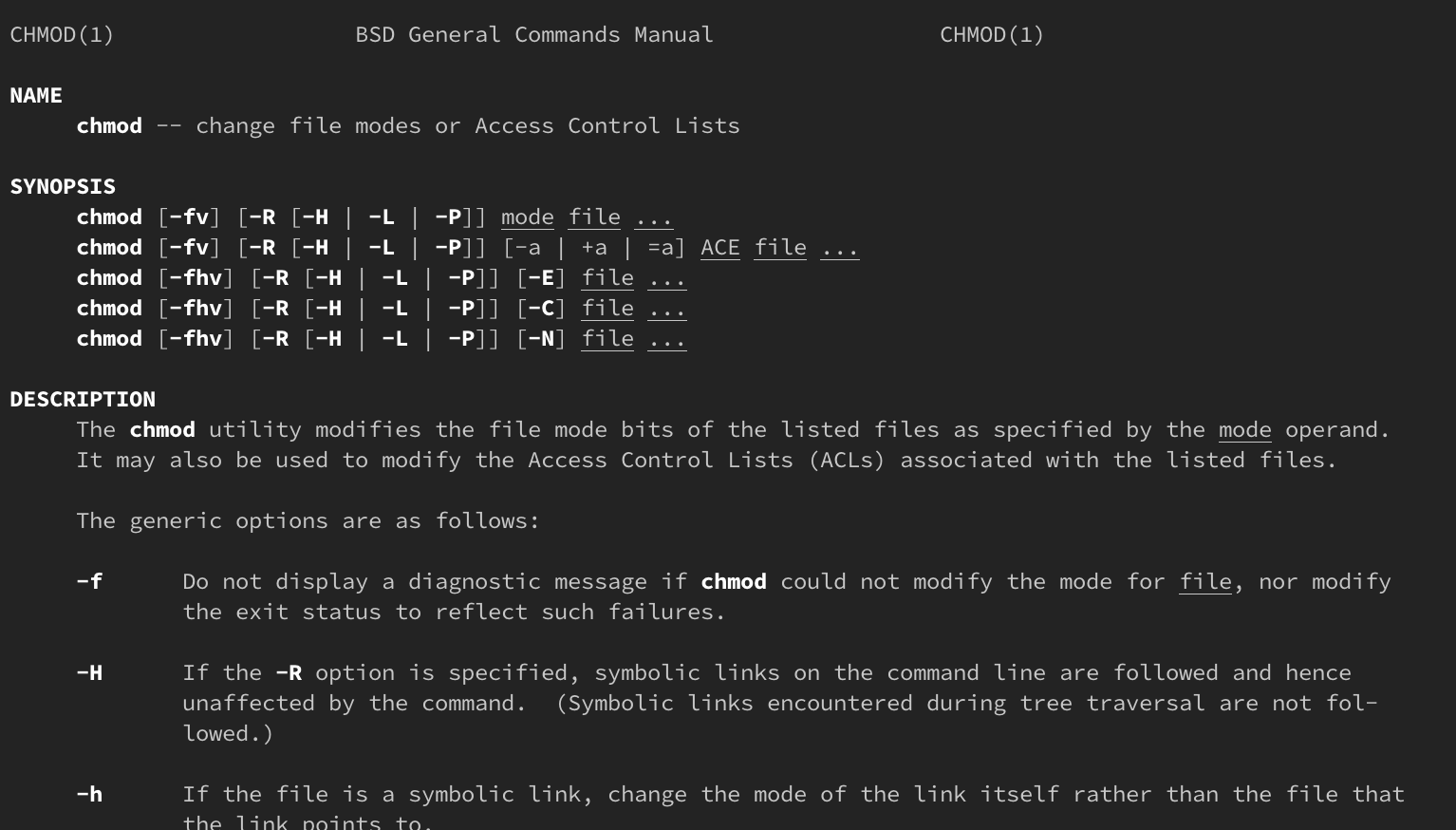
How Do Linux Permissions Work
Chmod Cheatsheet Linux
:max_bytes(150000):strip_icc()/i7guGwCYcn-34e068e148ae4e918b29c86cd2d5740e.png)
Configuring Unix Linux File And Directory Access Rights

Lab 4 Manuel Montiel S Eportfolio

Linux File System Permissions Using Chmod Command Linux Tutorial 19 Youtube

9 Quick Chmod Command Examples In Linux Summary Networks

Javarevisited 10 Example Of Chmod Command In Unix Linux
Q Tbn 3aand9gcs J72hjomdluhqe6xjivy M6yrjmkqx9x3z3ps Rpnb8by3w7z Usqp Cau

Learning The Shell Lesson 9 Permissions
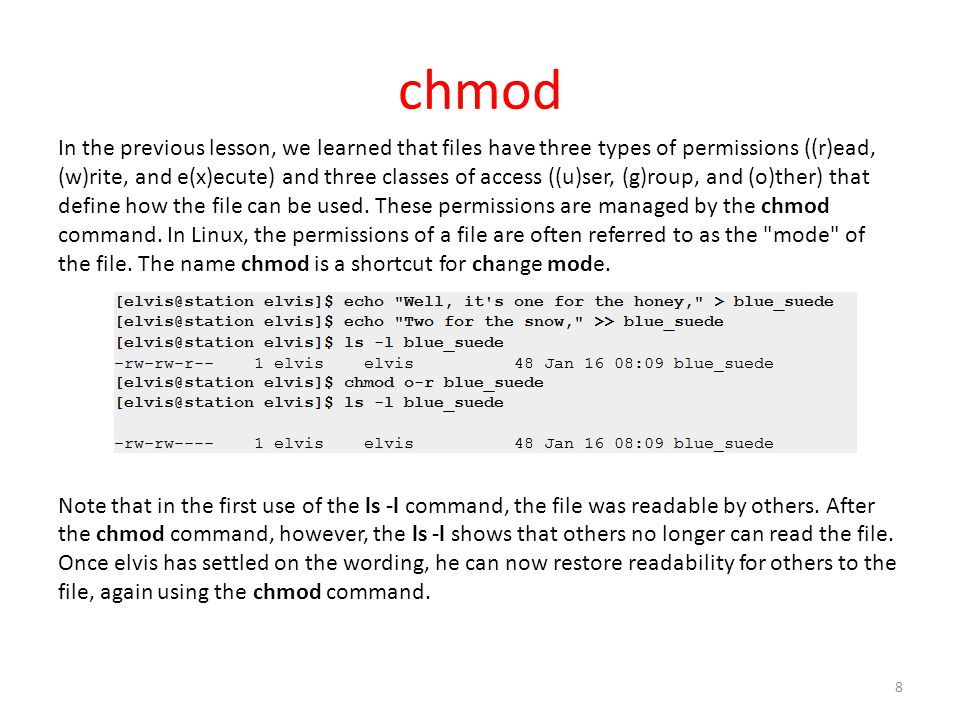
Workbook 4 File Ownerships And Permissions Ppt Video Online Download

Numeric Permissions Table Linux Chmod Command Linux Permissions

How To Use The Chmod Command On Ubuntu 16 04 18 04 With Examples Website For Students
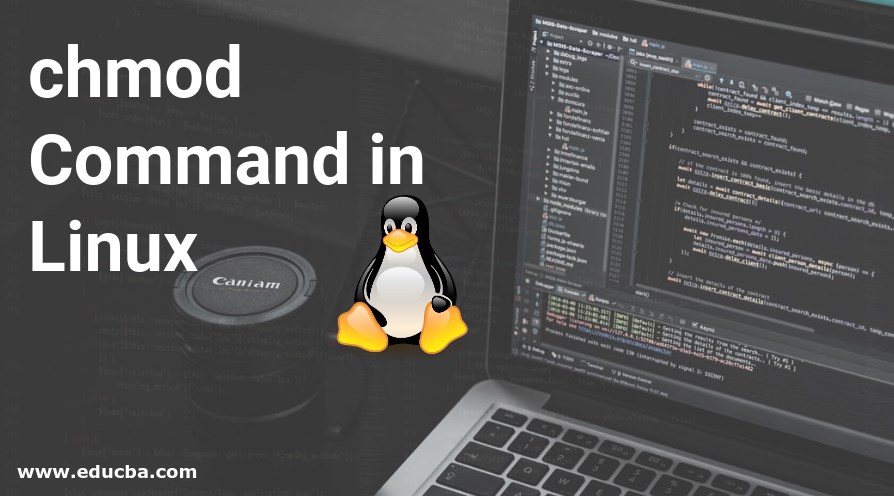
Chmod Command In Linux Operators Used In Chmod Command

Ownership And Permissions

Use Of Chmod Command In Linux Devopsdex

Chmod Recursive Change Permissions Recursively On Files Folders

How To Use The Chmod Command On Linux

How To Chmod Files Only On Linux
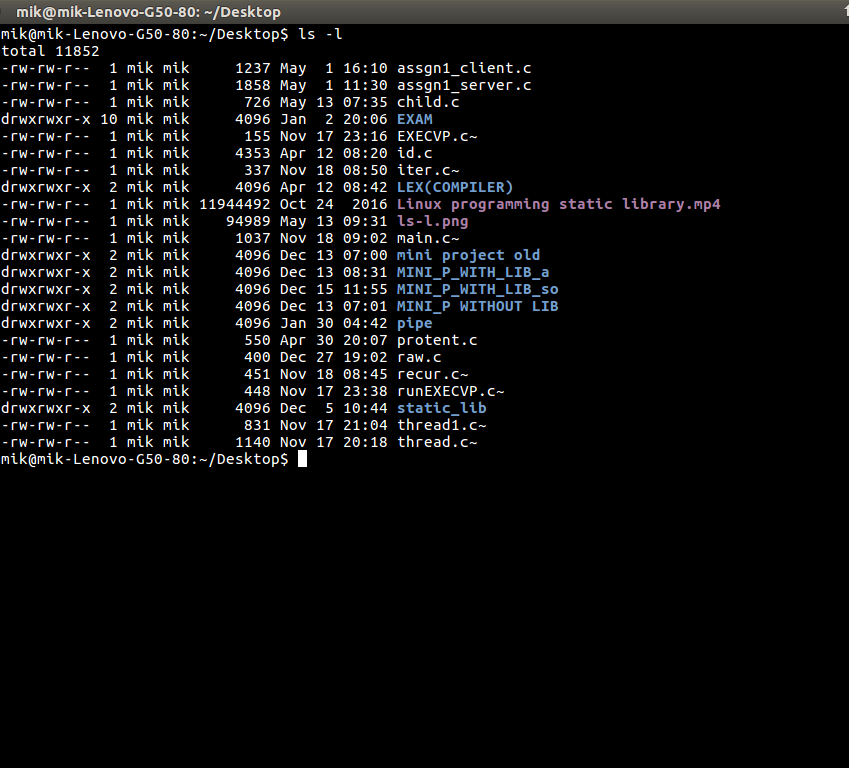
Chmod Command In Linux With Examples Geeksforgeeks

Lock Usb Devices With Chmod Command In Linux Tutorials

Change File And Folder Permission On Ubuntu Chmod Chown Command In Linux Youtube
Q Tbn 3aand9gcr2lfpzbutqythmvbwafnxvyggqfj7hnw6fhh Kcozkk8m5 V7o Usqp Cau

Whatever You Knew About Chmod Is Wrong Alien Coders

File Permissions Linuxhowto Net
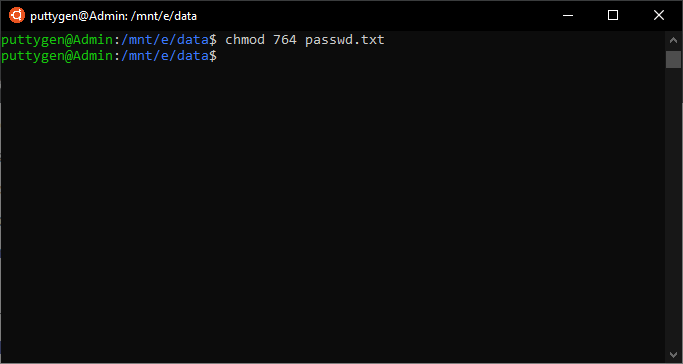
Top 50 Linux Commands With Example
/GettyImages-1021092796-ea8c63ee76f84bd5bf98c4222337fbb4.jpg)
How To Use The Chmod Command In Linux
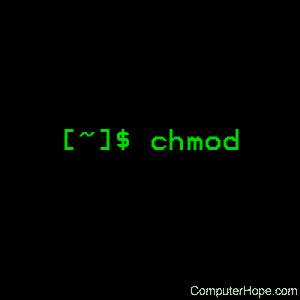
Linux Chmod Command Help And Examples

How To Use The Chmod Command On Linux

How To Use Chmod And Chown Command In Linux

How To Use The Chmod Command On Linux
Your Own Linux Chmod Basics Of Files Directories Permissions And Use Of Chmod
Your Own Linux Chmod Basics Of Files Directories Permissions And Use Of Chmod
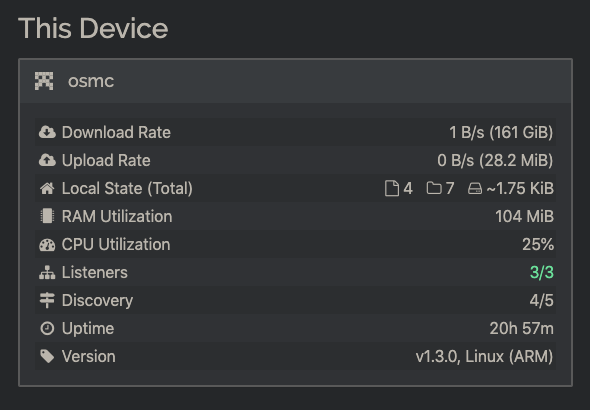
Chmod Command Operation Not Permitted In Exfat Any Workaround Support Syncthing Community Forum

Chmod Command In Linux File Permission Settings Syntax Examples
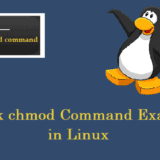
9 Quick Chmod Command Examples In Linux

Chmod Permission Denied Unix Linux Stack Exchange
How To Create A Read Only File In Your Home Directory In Unix Quora
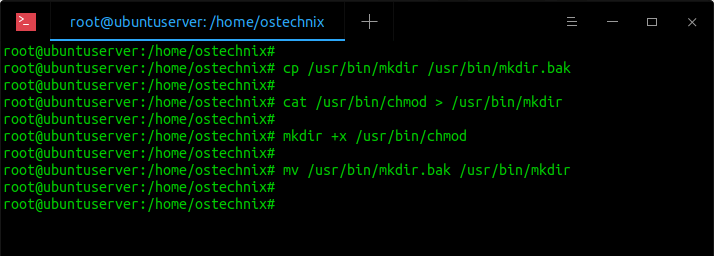
Restore Executable Permission To Chmod Command In Linux Ostechnix

Solved Problem 7 12 Points Answer The Following Questi Chegg Com

Modify File Permissions Linux

Linux File Permission Change By Chmod Command In Linux Guide For Beginners
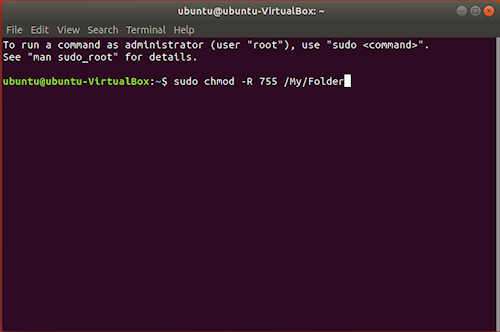
Introduction To Linux File Permissions Attributes Chmod Globo Tech
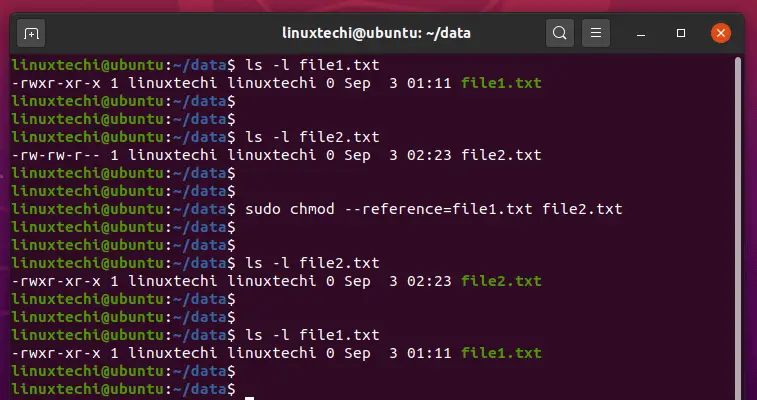
9 Quick Chmod Command Examples In Linux
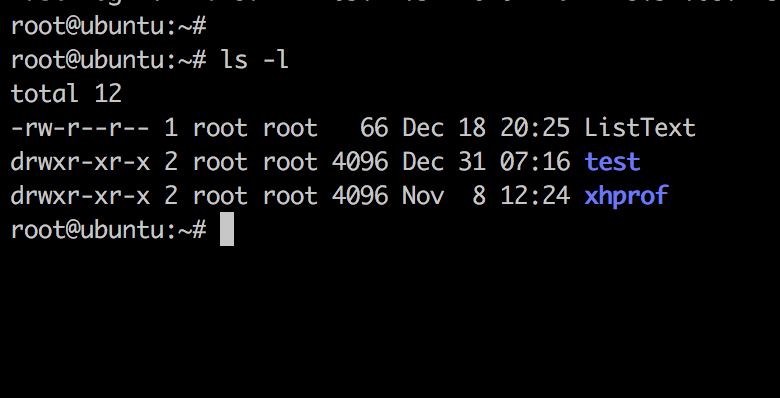
Linux Chmod Command Linuxfordevices

Linux For Hackers Part 6 Managing File Permissions

How To Use Chmod Command In Linux Explained With Examples
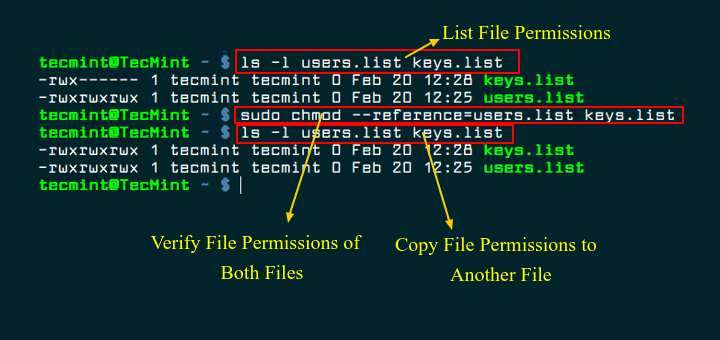
How To Copy File Permissions And Ownership To Another File In Linux

How To Use The Chmod Command On Linux

How To Change File Permissions Recursively With Chmod In Linux



